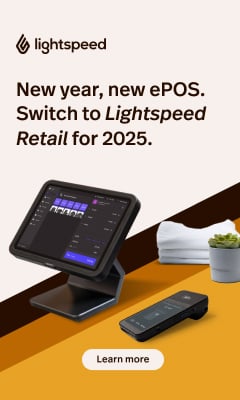Insight: don’t overlook the value of stores
Fashion retailers’ ongoing focus on investing heavily in their e-commerce operations is resulting in them missing out on the opportunity presented by their store estates, which should be better connected to their online presence.
Uwe Hennig, chief executive of Detego, says that by committing their resources to the online channel they are failing to recognise that the bulk of their sales are still derived through physical stores and that they should address this disparity.
“Retailers think the biggest part of their sales is the web but they have huge investments in stores that they cannot easily jump out of [the leases]. All the statistics and analysts tell us that for fashion customers’ the start of their journey is online but then they go in stores [to buy]. The store is often disconnected from online even though customers want the same experience in-store as they get online,” he explains.
Part of the reluctance to invest in stores is the out-dated mindset still retained by many IT departments that still consider putting technology into stores as being three-year long deployments and significant investments in hardware and software infrastructures. In contrast, he suggests IT executives should adopt the practices that they invariably subscribe to in their personal lives.
Never Miss a Retail Update!This involves using technology that is not wedded to large capital expenditures but is based around cloud-based, Software-as-as-Service (SaaS) solutions. And in terms of hardware the route should be to lease rather than purchase outright.
“This will be the successful model of the future for hardware and software. Retailers have never been great at putting the latest technology into stores. It’s always been Point-of-Sale and a PC in the back office,” says Hennig.
Employing agile technology solutions will enable retailers to operate a much more connected organisation that provides the platform on which data can be shared seamlessly across their entire organisation. The most valuable aspect of this is arguably the visibility of inventory, according to Hennig, who says retailers should have this data available in real-time and to make this possible for fashion retailers RFID technology needs to be implemented.
“Real-time is the key. Retailers should not be working with old reports. They should be able to compare store-by-store, item-by-item, down to the individual SKU level. People over-hyped RFID and talked about it replacing the barcode but the technology did not deliver. But technology vendors have since done a great job and prices are now much lower for RFID tags are they are now being widely used in the fashion industry,” he says.
Whereas tags on food and FMCG items are unsuited because of the cost of the item versus the unit price of the tag, this is not the case with fashion according to Hennig, who says the category is particularly well suited to RFID because of the unique situation of it having multiple size and colour variants.
“In a denim department of a store you’ll only see blue trousers. How are you able to see all the sizes on the shelf? How can you ensure you have all of them available on the shelf? RFID is now being understood by fashion retailers and we’re deploying solutions with retailers in Germany, the UK and France,” he says.
With the item level visibility that RFID can bring, combined with a connected infrastructure, retailers can enjoy the benefits of rich insight derived from the analytics they can run on their real-time data. Hennig says it becomes possible to “gauge the age structure” of what’s on the shelf whereby products that are not selling could be moved to other stores where there is a greater likelihood of a sale ahead of any need to bring in any discounting.
“The only analytics capability retailers previously had was from their PoS data that provided daily and weekly reports but these did not tell them much. Now they know what [inventory] they have and where exactly it is. They are now more able to say ‘yes’ to customers,” he says.
Hennig suggests these customers have been “spoilt” by the rich experience they have become accustomed to online and that stores have simply not reflected this. But he believes there is a growing recognition by some companies that using the relevant technology can provide them with the capability to differentiate their offer from that of their competitors and thereby they are more likely to enjoy a successful future.













